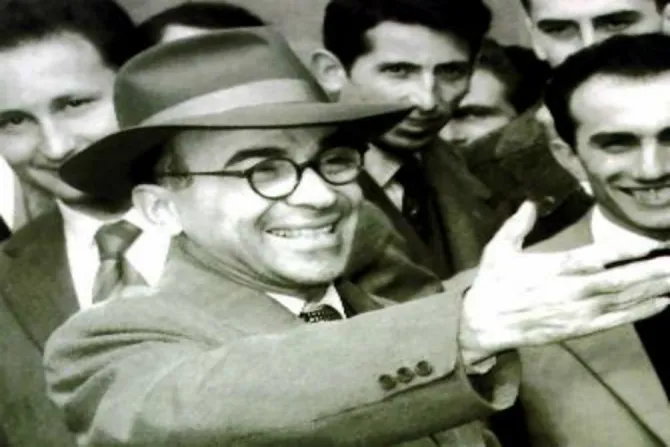Vatican City, Jul 5, 2018 / 10:50 am
Most mayors do not live in unheated monastic cells, deliver candy from Orthodox patriarchs to the pope, or become ambassadors for international peace.
Giorgio La Pira was not like most mayors.
The cause for sainthood for Giorgio La Pira, the "holy mayor" of Florence, was moved forward on July 5 as Pope Francis authorized the decrees of "heroic virtue" for the Italian politician, along with three other "Servants of God."
Pope Francis met with Cardinal Angelo Amato, the prefect for the Congregation for the Causes of Saints on Thursday, and approved Giorgio La Pira (1904 - 1977), Carlo Acutis (1991 - 2006), Pietro Di Vitale (1916 - 1940), and Alessia González-Barros y González (1971 - 1985) to each bear the title of "Venerable."
As the mayor of Florence from 1951 to 1965, La Pira's influence extended well beyond his municipality. He made several official trips behind the Iron Curtain to Russia, China and Vietnam during the Cold War to promote peace and human rights, which were virtually unheard of among Western politicians. Before traveling to Moscow, La Pira visited Fatima and wrote to cloistered religious orders asking for their prayers for his journey.
At home in Italy, La Pira advocated for the poor and for workers rights. He also contributed to the writing of the Italian Constitution after World War II.
La Pira's political perspectives were controversial in Italy, and some have criticized his openness to dialogue with communist parties and leaders.
La Pira was, however, well-respected by religious leaders, even beyond Catholicism. In 1960, he began a friendship with Athenagoras I, the Orthodox Patriarch of Constantinople, who famously asked the mayor to bring an unprecedented gift of candy to Pope John XXIII, as a way to foster relations between the two churchmen. Four years later, Athenagoras and Pope Paul VI held a historic meeting in Jerusalem, which led to the rescinding of excommunications issued after the Great Schism in 1054.
La Pira became a Third Order Dominican in his early twenties, which shaped his spiritual life as a layperson before he went on to be a lawyer, politician, university professor, and peace advocate. He chose to live in simplicity in a cell in the monastery of San Marco in Florence until bronchitis forced him to move out.
Pope Saint John Paul II spoke of the important role La Pira played in the reconstruction of Europe, and chose to celebrate the "Jubilee of Governors" in 2000 on the date of La Pira's death, Nov. 5. A quote from the former mayor of Florence was also selected as the motto for the celebration, "Our participation in a Holy Year is not an act of piety but a political act, because it must contribute to the realization of God's plan in history."
After La Pira died in 1977, Pope Paul VI honored him in an Angelus address.
The three other Servants of God were also found to have heroic virtue on July 5 were all died under the age of 25.
Italian Carlo Acutis died of leukemia in 2006 at the age of 15. He had a deep love for the Eucharist, and created a website documenting Eucharistic miracles around the world before he died.
Alessia González-Barros y González died in Spain at age 14, and Pietro Di Vitale, a native of Sicily, was studying for the priesthood when he died at age 23.



